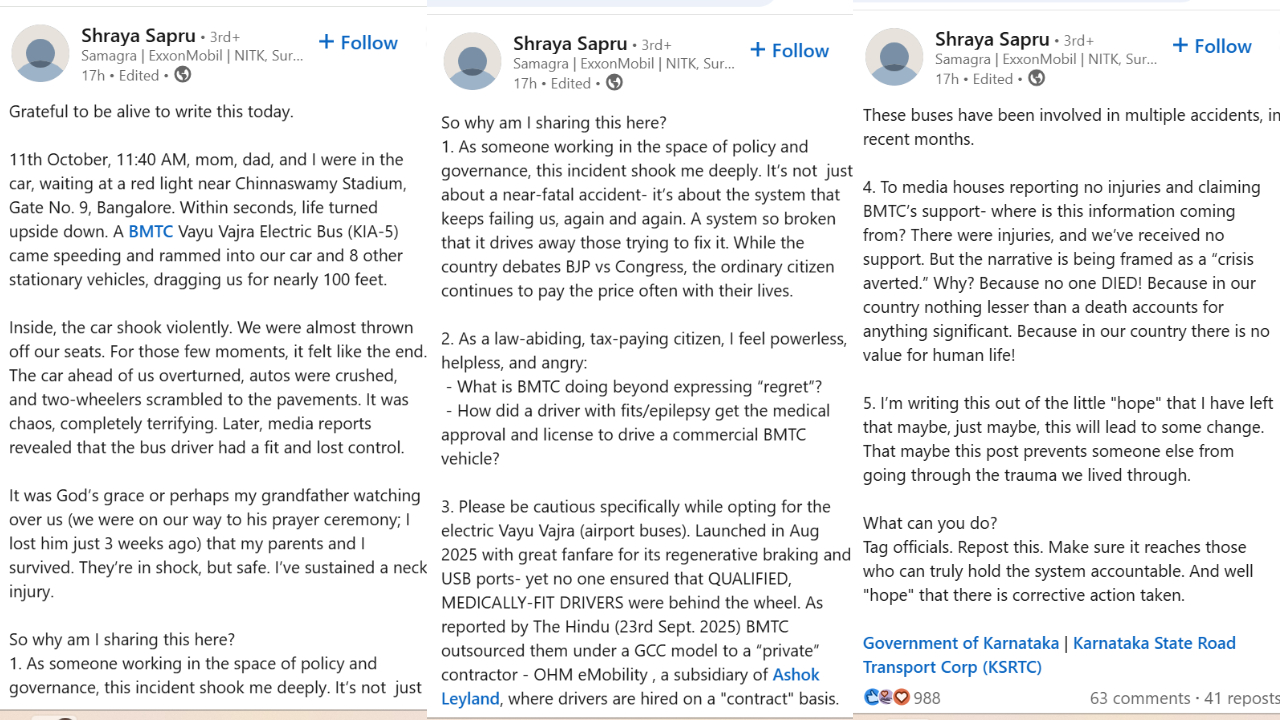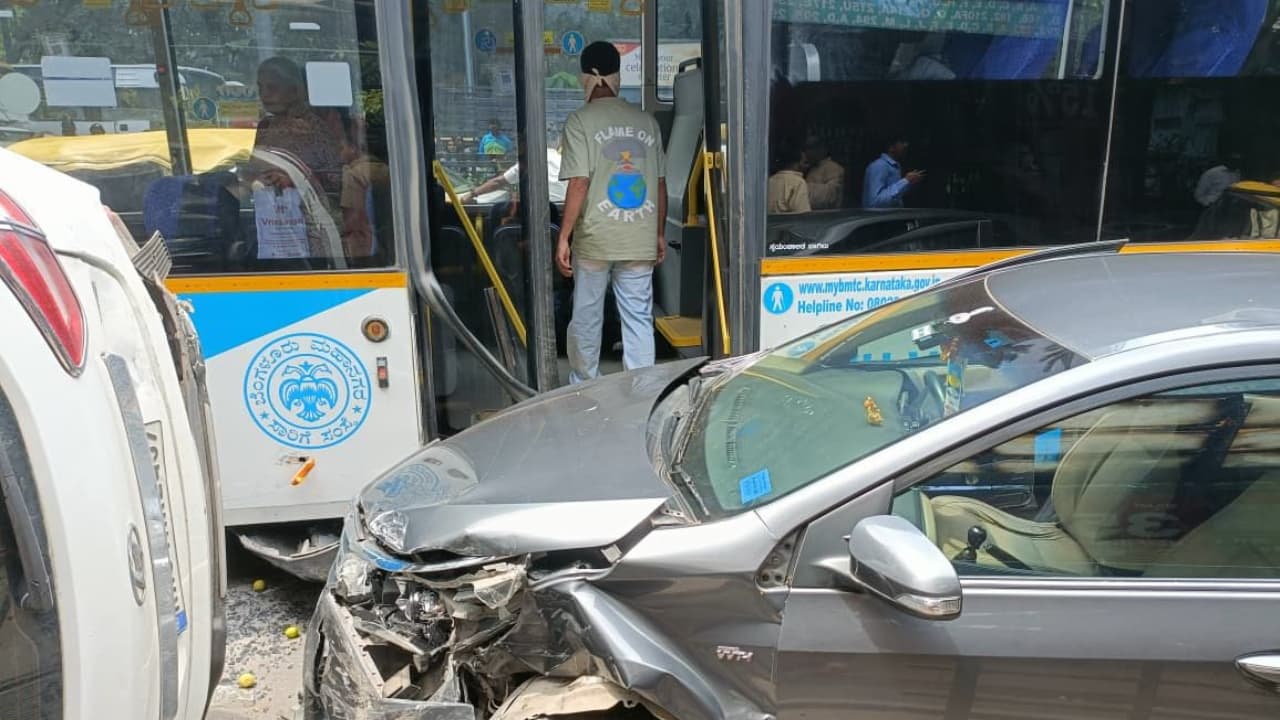Bengaluru resident Shraya Sapru survives a terrifying BMTC Vayu Vajra bus crash near Chinnaswamy Stadium. She recounts the ordeal, raising concerns over driver vetting, public transport safety, and systemic failures in Bengaluru’s urban transport.
Bengaluru witnessed a terrifying accident on 11th October when a BMTC Vayu Vajra Electric Bus (KIA-5) lost control and collided with multiple stationary vehicles near Gate No. 9 of Chinnaswamy Stadium. Shraya Sapru, a governance and policy consultant, along with her parents, was among those caught in the chaos. The bus dragged their car for nearly 100 feet, overturning nearby vehicles, crushing autos, and sending two-wheelers scrambling to the pavements.
For Shraya and her family, the moments were sheer terror, violent jolts threw them against their seats, and for a brief time, it felt as if their lives were over. Later reports revealed that the bus driver had suffered a medical fit, raising serious questions about driver vetting and public transport safety in the city. Miraculously, Shraya and her parents survived, though she sustained a neck injury. The incident has shaken Bengalureans and highlighted systemic failures in urban transport safety and governance.
Highlighting Systemic Failures
Shraya shared the incident on LinkedIn to emphasise the structural problems in public transport safety in India.
“It’s not just about a near-fatal accident, it’s about the system that keeps failing us again and again,” she writes.
According to her, the system is so broken that even citizens dedicated to improving governance are at risk, while ordinary citizens continue to bear the consequences of administrative negligence.
Questions on BMTC Oversight
Shraya raises serious concerns regarding the oversight of BMTC buses:
Why has BMTC only expressed “regret” and not taken corrective action?
How did a driver with known medical conditions, such as fits or epilepsy, receive approval to operate a commercial bus?
She also cautions commuters about the electric Vayu Vajra buses, launched in August 2025 with fanfare for features like regenerative braking and USB ports. According to The Hindu, these buses, outsourced under a GCC model to OHM eMobility (a subsidiary of Ashok Leyland), have been involved in multiple accidents in recent months, highlighting gaps in driver vetting and safety protocols.

Media Reporting and Public Safety Concerns
Shraya criticises media outlets for framing the incident as a “crisis averted,” despite injuries occurring. She questions why incidents that do not result in death are often downplayed, pointing out a systemic undervaluation of human life in India. Her post aims to generate awareness, encourage accountability, and prevent similar trauma for other commuters.
What Citizens Can Do?
Shraya urges readers to tag officials, repost the incident on social media, and ensure it reaches those who can hold the system accountable. Her hope is that public attention may prompt corrective measures, stricter driver vetting, and a safer commuting environment in the future.
User Reactions
“I am a regular BMTC commuter. What I find very irksome is the rash driving! Every driver seems to be in a tearing hurry without exception. The way they brake is hazardous for people inside the bus, not only on the road outside.”
“Unfortunately, the bus drivers are paid based on the number of trips or kilometres driven per day and their adherence to schedule. In traffic, they often resort to reckless driving, including using the wrong side of the road to avoid U-turns.”
